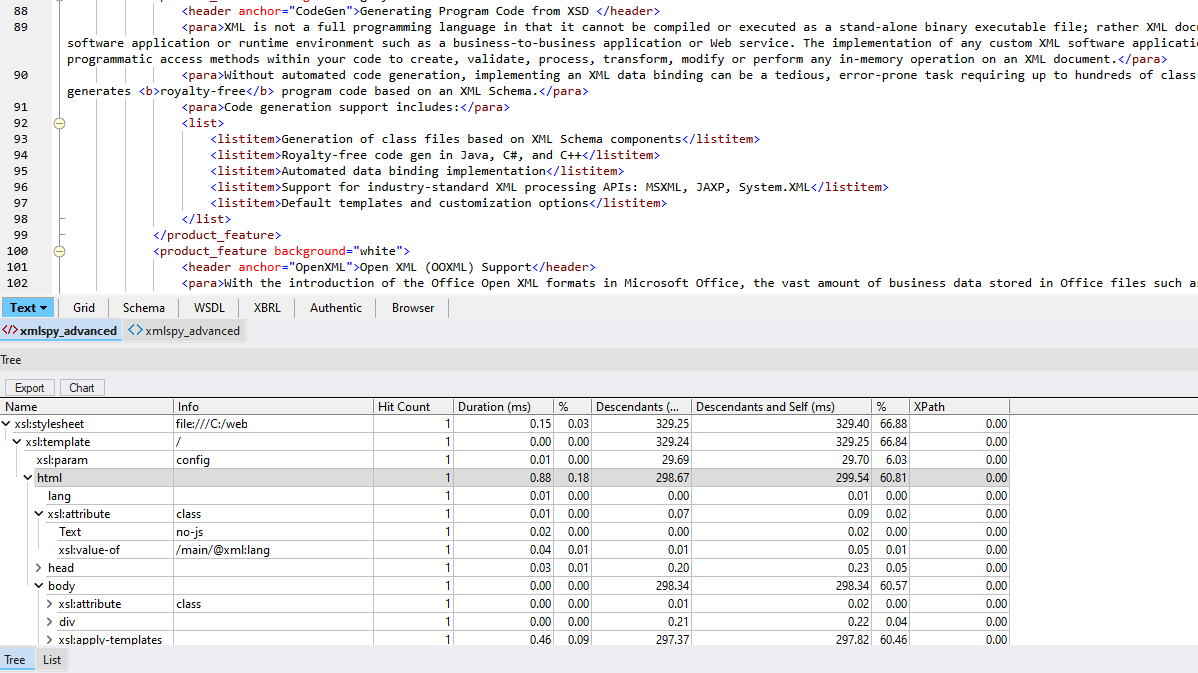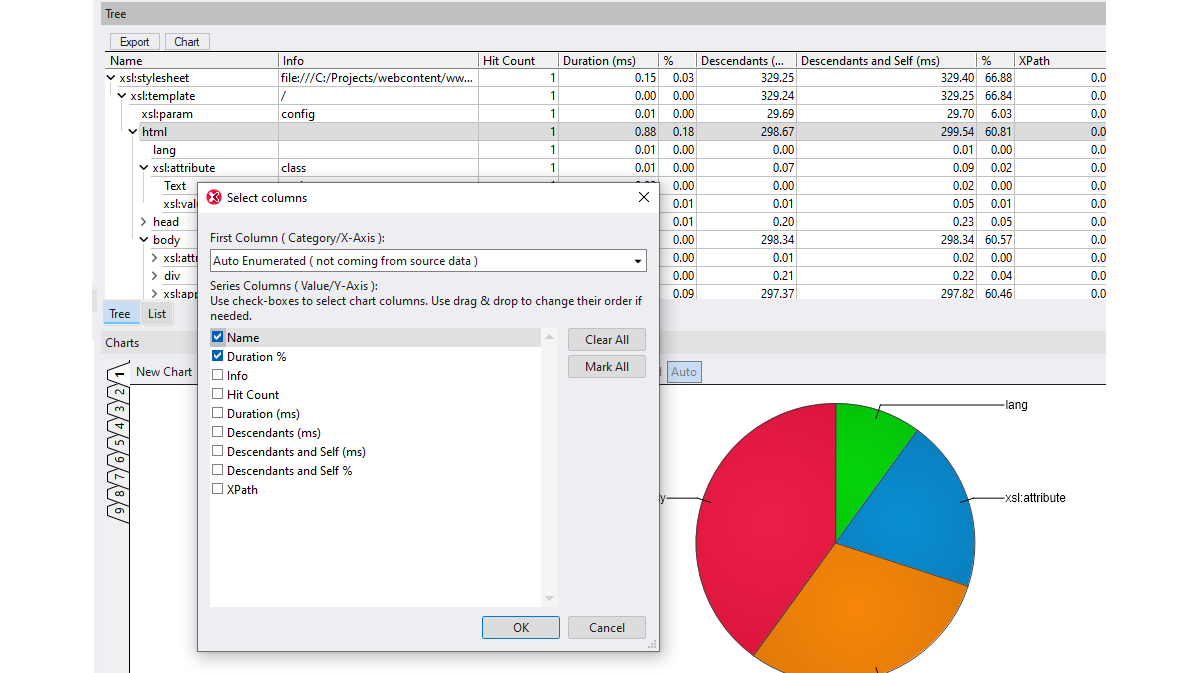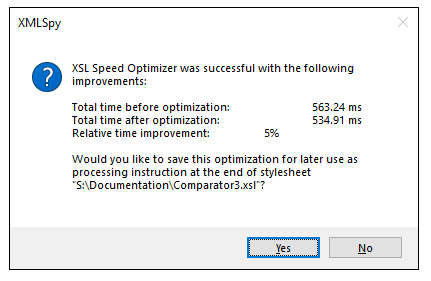
The XMLSpy XSLT Profiler is an invaluable tool for optimizing the performance of your XSLT code. Based on the information revealed by the XSLT profiler, you can immediately see which parts of code are taking the most time to process and adjust them accordingly to fully optimize your XSLT stylesheets.
When profiling is enabled for an XSLT transformation, XMLSpy displays metrics including hit count, duration, descendants’ duration, and XPath values. These are displayed for each XSL variable, parameter, and template in a tree view and list view. Clicking any element listed in the profiler window automatically opens its associated stylesheet and highlights the element, helping you track down performance bottlenecks with a single click.





